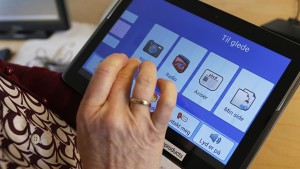Accessibility and interaction design
Karde has gained solid expertise in interaction design and accessible user interfaces, both in terms of the result and the process leading to a design. Today, increasing attention is paid to accessibility than ever before. Some of the reasons for this are the rules for public procurement, discrimination and accessibility acts in Europe, the development of accessibility standards, as well as a major international policy focus. In our development projects, accessibility is an integral and important element.
In all development activities, Karde practices user-centered methods which allow the end users to communicate their knowledge and requirements. Focus groups, personas, online surveys, scenarios and paper prototyping are examples of our main methods.
We produce responsive design solutions that optimise the presentation of services on different devices such as smart phones, tablet PCs and personal computers.
We have a strong focus on interaction design for users with cognitive decline, and we have extensive practice from this field.
Our employees also participate in the standardisation work on accessibility. We regard standards as an important tool to achieve accessibility of systems and services for all end user groups, be it professional users, customers, students, civil servants or citizens.
Contact
Riitta Hellman, mobile +47-982 11 200

